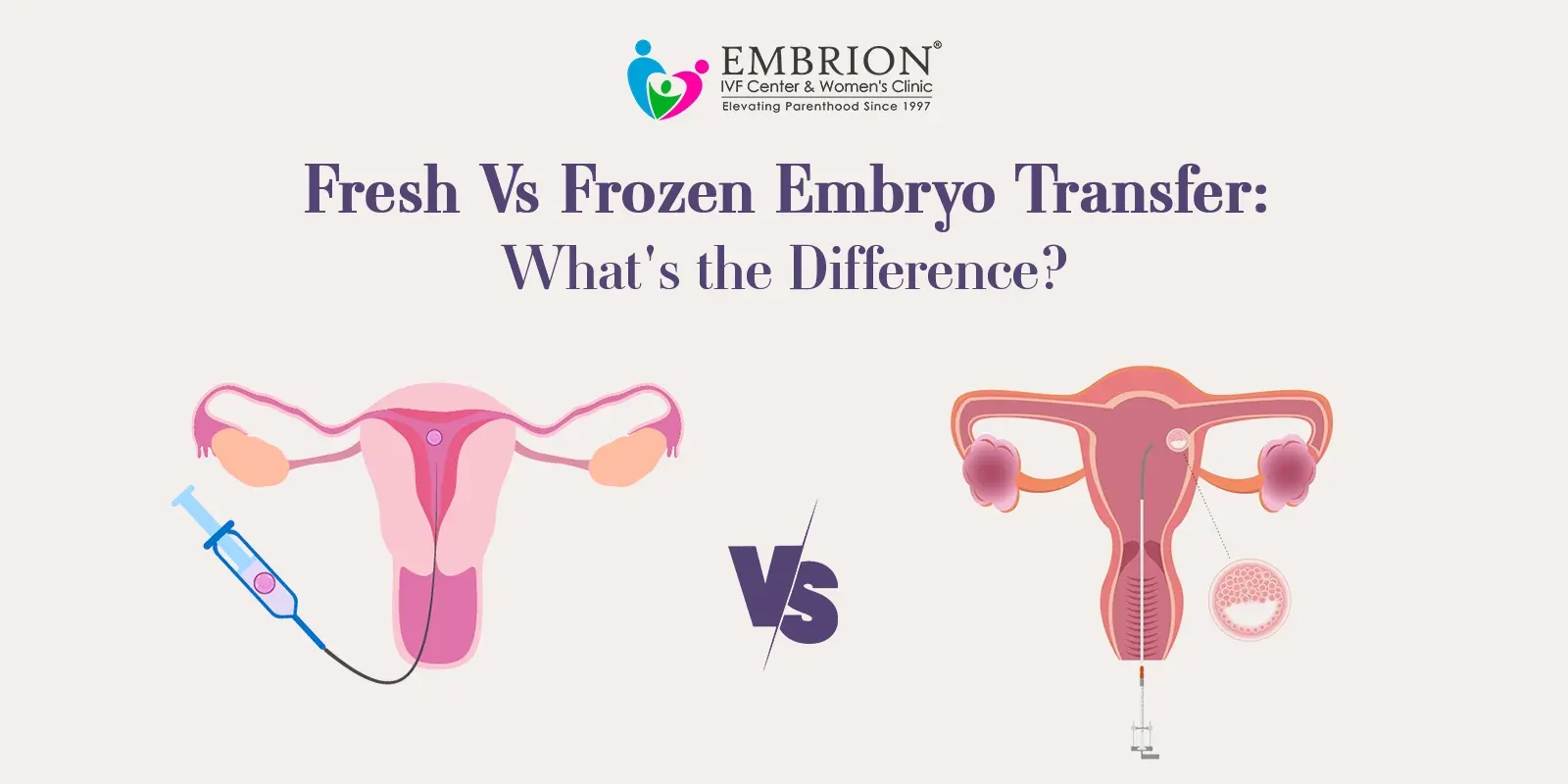Being a parent is a big responsibility. It starts from the first time you think to begin this journey. And you want to be very sure about everything related to your pregnancy. If you are choosing Embryo Freezing to start your parenthood journey, then you must want to go with the best and might get confused about Fresh and frozen embryo transfer, which will be the best for you or what is the difference. In this blog, Embrion IVF will help you to understand the Fresh vs Frozen Embryo Transfer: what’s the difference? So, what to wait for let’s dive into the journey and collect the information.
We will go step by step. First, let’s discuss about what it is and how it works. Before talking about fresh vs frozen embryo transfer.

When an egg is fertilised with sperm in a laboratory and eventually implanted in a woman's uterus, this method is known as embryo transfer. This process takes 3 to 5 days following oocyte retrieval, in which the eggs are taken from the ovaries and fertilised outside. Transferring embryos comes under the process of in-vitro fertilisation.
The endometrium, or the lining of the uterus, needs to be prepared for both fresh and frozen transfer for the easy implantation of the embryo. The endometrium thickness and quality will be checked through ultrasound.
During the frozen Embryo transfer is to take oral, injectable, vaginal, or transdermal hormones to prepare your uterus to absorb an embryo. Generally, the procedure includes 14 to 21 days of oral medication, followed by six days of injections. During this time, two or three appointments are needed to monitor your uterus through ultrasound to measure your hormone levels with a blood test. When your uterus is prepared, then the next step will be the embryo transfer procedure. Frozen embryo transfers can take place years after egg retrieval and fertilization.
The fresh embryo transfer procedure is the same as the frozen one. The only difference is that embryos are transferred within three to five days of retrieval. For the embryo transfer procedure, your cervix will be clean. A catheter ( a small thin tube) will be inserted through the vagina and cervix into the womb. And the embryo will be inserted into it. The procedure takes 15 - 20 minutes. The embryo will implant in your uterus a few days later if the procedure is successful. Now read fresh vs frozen embryo transfer in detail.
A fresh embryo transfer usually takes five days after female egg retrieval. The eggs are taken out to fertilise with sperm in the laboratory, and the development of the embryo is observed continuously. The main advantage of a fresh embryo transfer is that it takes less time to conceive, in 5 days after egg retrieval and embryo transfer into the uterus. In addition, many insurance companies do not cover the expense of cryopreservation. Thus, some patients prefer fresh embryo transfers for financial reasons.
Frozen embryo transfers are commonly used. One of the most typical reasons for a frozen embryo transfer is because the patient has unused embryos from a previous cycle. If a patient does not become pregnant, suffers a pregnancy loss, or has had a baby but wishes to have another. They can use the additional embryos that were previously generated. Over the years, there may be additional factors that reduce the possibility of getting pregnant with a fresh transfer, so a frozen transfer is a viable alternative.
These risk factors may include concerns about developing ovarian hyperstimulation syndrome if a patient conceives through a fresh transfer, as well as an increase in progesterone during ovarian stimulation, which increases the potential that the embryo and uterus are out of sync. Patients who want to genetically test their embryos must generally freeze them while they wait for the results. Finally, if there is a problem with the endometrium, such as a polyp or a thin endometrial, the transfer may be postponed until the uterus is fully evaluated.
The key factor to consider when opting between fresh vs frozen embryo transfers can be the success rate. The good thing is that the success rates of fresh vs frozen embryo transfer are approximately the same in recent research. There are no significant differences in pregnancy or live birth rates between women who received fresh and frozen transfers.Additional research indicates that the mothers' age may not be a meaningful factor in determining IVF success, so if your primary concern is fresh vs frozen embryo transfer (IVF) over 40 years old, it is crucial to mention that the technique you choose should not make a significant difference in the outcome. However, the chance of miscarriage increases with age, which is vital to consider during the IVF process.
Embrion IVF has helped many couples for years to get the parenthood life with a high success rate and satisfactory services for all our patients. Every couple who comes to us steps out with happiness and full hope of getting a parental life. If you are the one who is still thinking, then dear, it is to take action and visit our Embrion IVF to convert your dream into reality through IVF treatment. I hope you got the answer on Fresh vs Frozen embryo transfer: What's The Difference? And now, you can decide which one is best for you.